Turtle Basking Logs, Platforms, and Rocks
Turtles are ectothermic, meaning they raise and lower their body temperature based on the environment. To maintain their body temperature and metabolic function, they need appropriate basking areas in the sun. These basking features can include logs or rocks onto which the turtles can easily climb to warm themselves (by thermoregulation).
Sometimes finding a place to bask can be a challenge for these animals. Turtles are often seen crowded together on the only log or exposed boulder in a pond. Land owners can help resident turtles by introducing additional basking sites into bodies of water.

There are three types of basking structures that landowners can install:
- logs
- rocks or boulders
- floating platforms
Floating basking logs work well in ponds, marshes, and reservoirs where there are no strong currents to move the logs downstream. Basking platforms are another alternative and can be built of wood and air-tight PVC pipes. The platforms are also best suited for calm waters. Where there is stronger current, large boulders are a good option, but heavy machinery is often required to lower them in place.
Floating Basking Logs – Materials and Installation
Floating logs are the most commonly used structures for turtles due to their relative ease of acquisition and installation.
- Look for untreated logs at least 3 m long (e.g., nearby fallen or uprooted trees). Cut off most of the side branches.
- A single small log will roll when a turtle climbs aboard, knocking other basking turtles into the water. The solution is to lash two or three smaller diameter logs together to minimize rolling. Tie the logs together with rope (natural jute rope is best) or heavy wire stapled to the logs.
- Cut the ends of the logs on a slant to allow turtles to climb up more easily. The top of the log can be planed flat to provide a better surface area for the turtles.
- Ensure the logs stay in place by attaching them to an anchor (e.g., cement block) with a rope or heavy gauge wire, as long as the depth of the pond.
- The site should have optimal sunlight exposure.
- To give the turtles space, do not install logs near boating docks or areas where people gather.
- Logs will eventually become saturated with water and sink, so replace as needed.
Logs can also be partially floating, with one end attached to the shore. While they don’t provide as much safety, turtles will use them. A large tree can be place perpendicular to the shore, with one end resting on the land and other end pointing into the water.
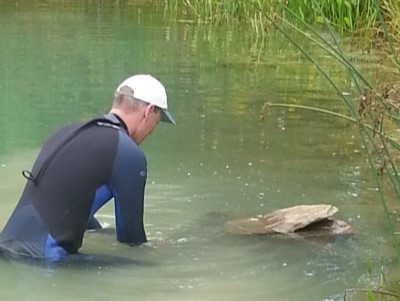
UTRCA staff installing a log in place
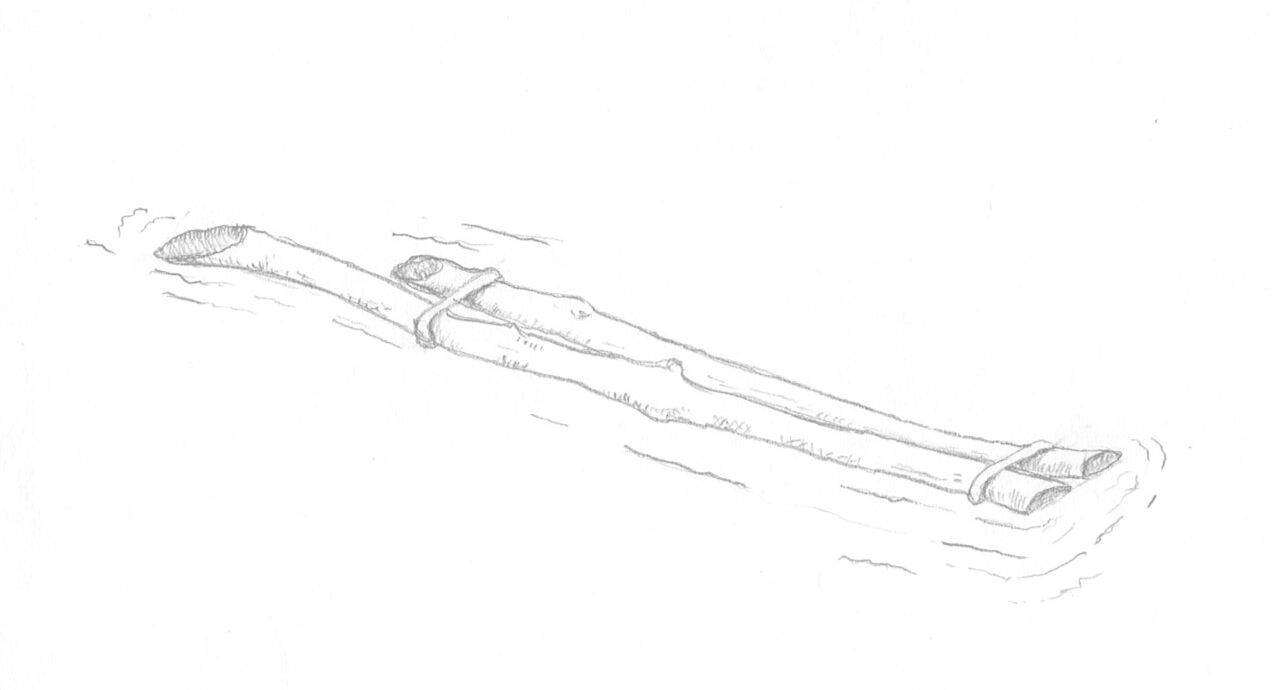
Sketch of basking logs tied together
Rocks or Boulders for Basking
Boulders are most easily added to wetland creation projects where heavy machinery is already on-site to dig the pond. A backhoe operator can chain the boulder and lower it into the pond or stream, not too far from the shore.
Tips:
- Large boulders can be purchased from a quarry or a landscaping outlet.
- Look for boulders with sloping sides instead of a cube shape, as turtles cannot easily climb vertical walls. Also, boulders should be large enough to be exposed above normal summer water level.
- Permits from a conservation authority may be required if placing boulders in a river or stream system where water flow or fish habitat may be impacted.
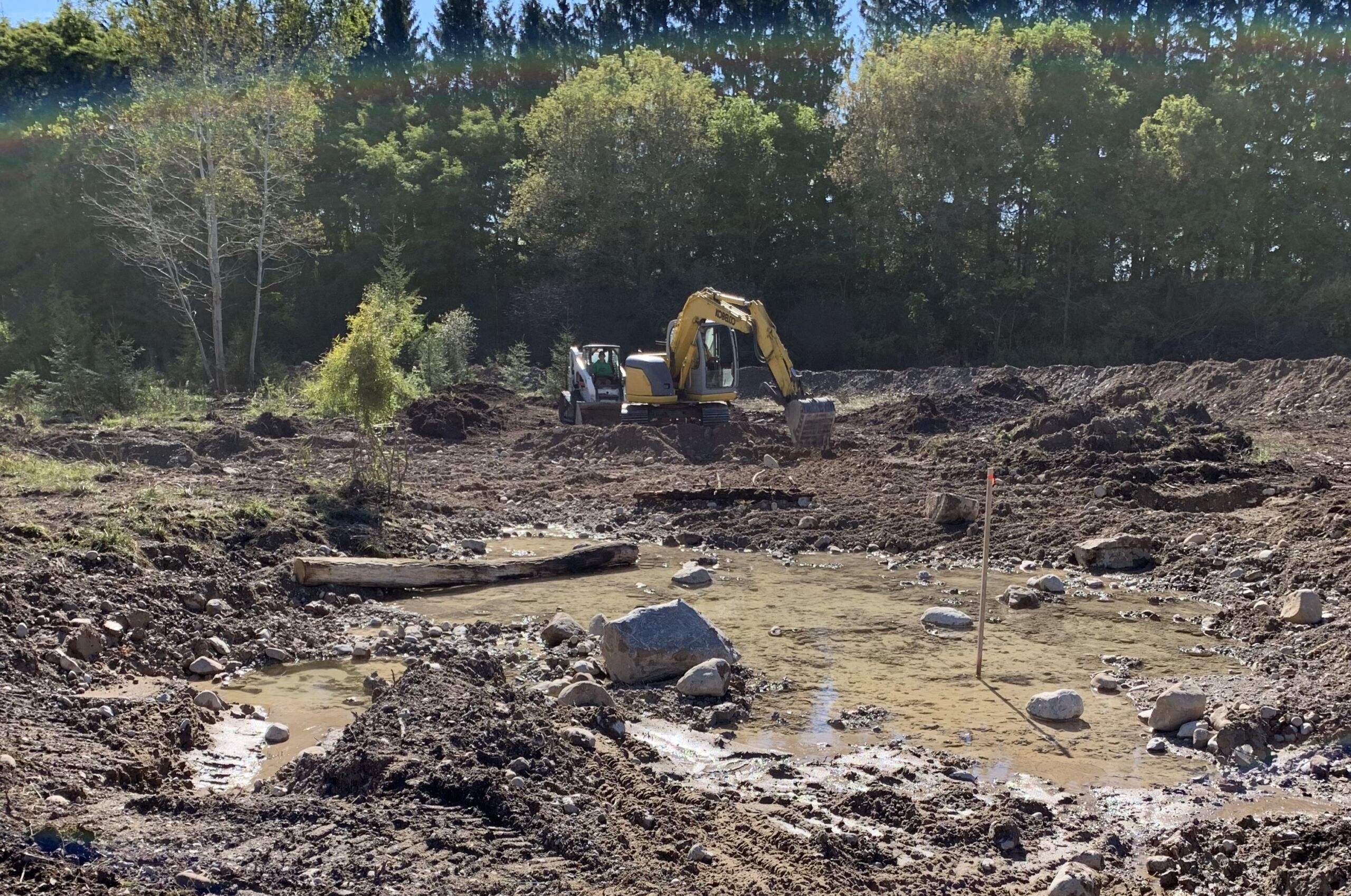
Basking logs and rocks being installed during the construction of a shallow wetland at Cade Tract
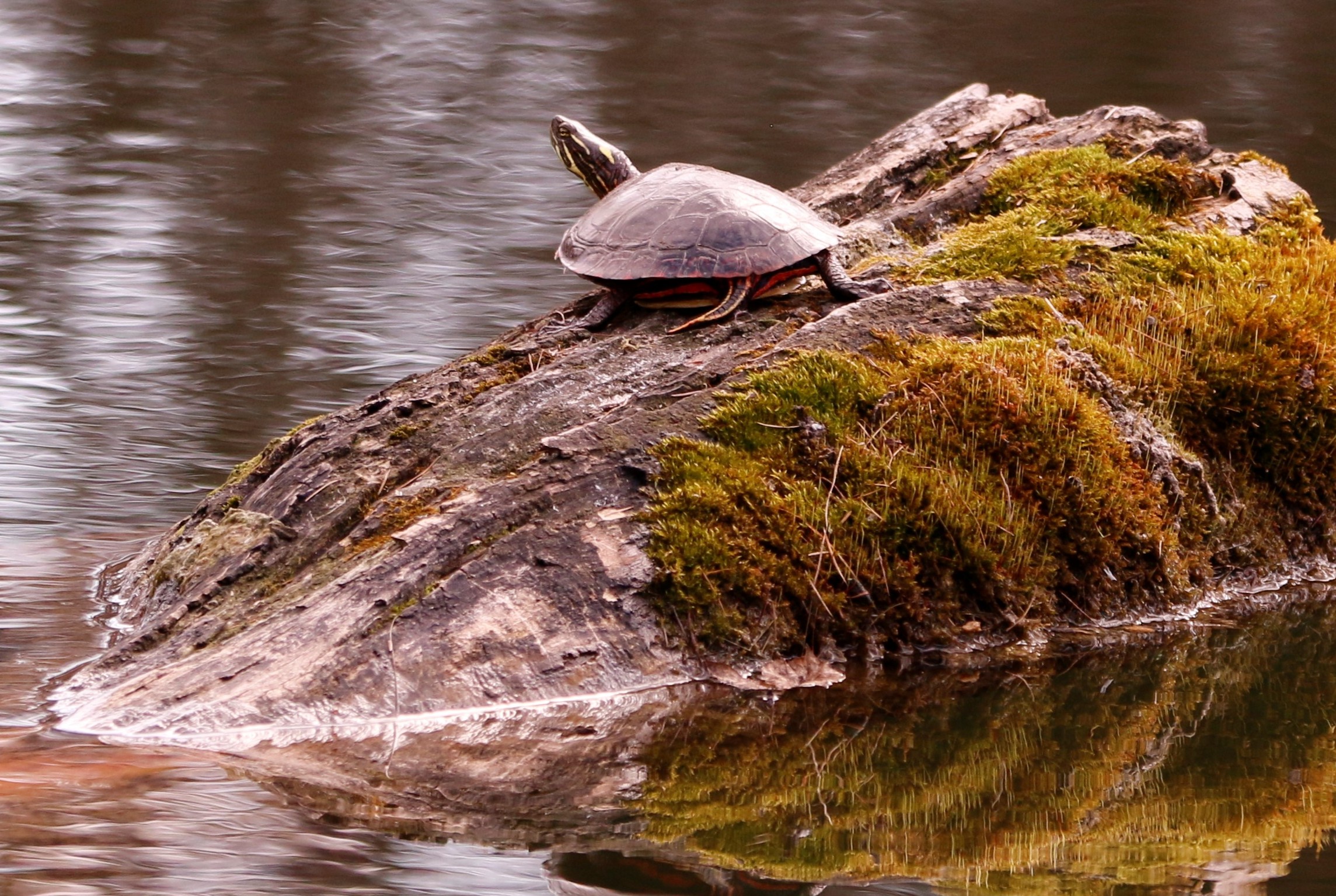
Midland Painted Turtle basks on a log
Floating Basking Platforms – Materials and Installation
Floating platforms can be custom-made to meet the needs of the turtle species present. Many designs could work, as long as the platform floats, anchored in place, and provides easy access for the turtles to bask on. Floating waterfowl platforms could be adapted for turtles as well.
One turtle platform design used by the Pennsylvania Fish and Boat Commission is 4 x 4 feet (1.2 x 1.2 m), made of wooden pallets and PVC pipes for floatation. The structures are installed on reservoirs in quiet areas away from boat traffic. They are placed away from shore where predators may be more abundant. The platforms are anchored in place with steel cables and concrete blocks. The structures also serve as simple overhead cover for fish such as bluegills and large-mouth bass.
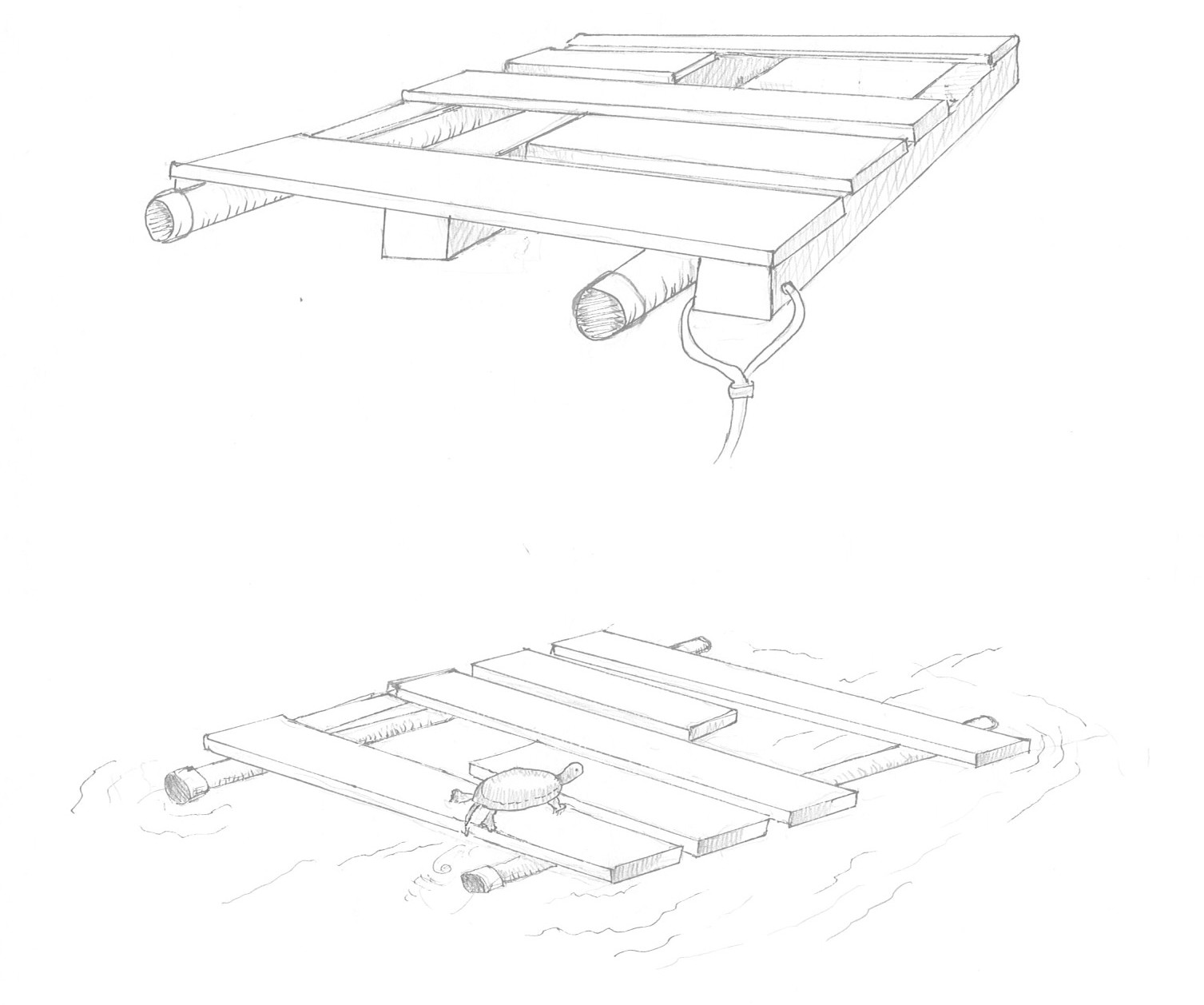
Sketch of floating basking platform design as seen above the water (top) and in the water (bottom)
Helpful Websites
Basking Logs
www.natureblog.org/turtle-logs
www.thinkturtle.ca/basking-sites
Floating Platforms
www.envirothonpa.org/wp-content/uploads/2013/12/Fish-Habitat-Management-for-PA-Impoundments.pdf
www.fishandboat.com/document/conservation/habitat/lake_structures
www.turtledockbuild.wixsite.com/turtle/post/building-the-dock

